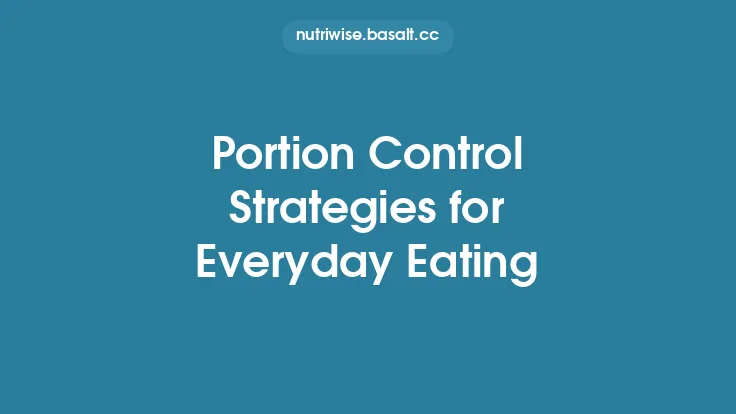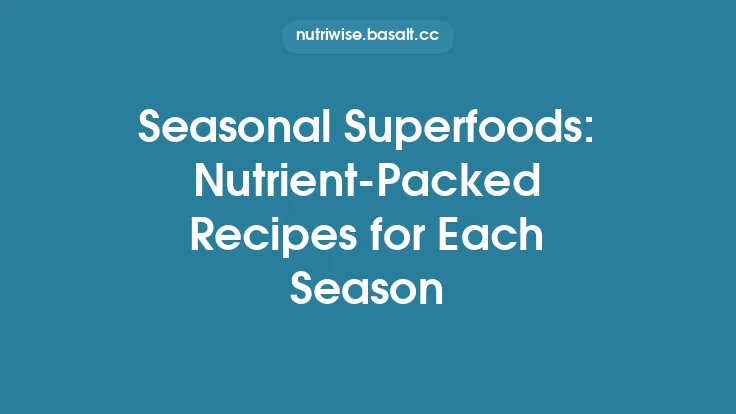The holiday season brings families and friends together around tables laden with dishes that have been passed down through generations. These meals are more than just food; they are expressions of cultural identity, stories of ancestry, and symbols of hospitality. Yet, the abundance that makes festive gatherings so special can also lead to overindulgence, leaving many feeling uncomfortable or guilty after the celebration. Mindful portion control offers a way to honor tradition while maintaining personal well‑being. By understanding the cultural context of serving practices, applying timeless principles of mindful eating, and using practical tools to gauge amounts, you can enjoy seasonal feasts with confidence and satisfaction.
Understanding the Cultural Context of Portion Sizes
Every culture has its own conventions for how food is presented and shared during celebrations. In many Asian traditions, dishes are placed in the center of the table for communal picking, while in Mediterranean households, a series of small plates (mezze) encourages sampling a variety of flavors. Recognizing these patterns helps you navigate the buffet without feeling compelled to fill your plate beyond what you truly need.
- Communal Serving vs. Individual Plating – Communal serving promotes sharing but can blur personal boundaries. Knowing that the host expects guests to take modest portions can relieve pressure to overfill a personal plate.
- Symbolic Portions – Certain foods are served in specific quantities for symbolic reasons (e.g., a single whole fish for prosperity). Respecting these traditions while still moderating intake is possible by focusing on the symbolic meaning rather than the literal amount.
- Course Structure – Many festive meals follow a multi‑course format, with lighter appetizers leading to richer mains and desserts. Understanding the intended progression allows you to allocate space on your plate for each stage, preventing the later courses from overwhelming you.
Core Principles of Mindful Eating
Mindful eating is a practice rooted in paying full attention to the experience of eating, without judgment. When applied to festive settings, it becomes a powerful ally for portion control.
- Pause Before You Plate – Take a moment to breathe and assess your hunger level. Ask yourself whether you are truly hungry or simply responding to visual cues.
- Engage the Senses – Notice the colors, aromas, textures, and flavors of each dish. Savoring each bite slows consumption and enhances satisfaction.
- Check In Regularly – Mid‑meal, pause to gauge fullness. The body’s satiety signals often lag behind the act of eating; brief pauses help you catch them before you overeat.
- Eat Without Distractions – Put away phones and turn off the TV. Conversational focus and mindful presence keep you attuned to how much you are consuming.
Practical Strategies for Portion Control
Applying mindful principles can be made easier with concrete tactics that respect both cultural customs and personal health goals.
- The “Plate Method” Adapted for Feasts – Visualize your plate divided into sections: half for vegetables or salads, a quarter for protein‑rich mains, and a quarter for starches or grains. Even when multiple dishes are present, this mental framework guides balanced choices.
- Small Plate, Small Bowl Technique – Use the smallest available serving ware for each dish. Smaller dishes naturally limit the amount you can take, while still allowing you to sample a variety of foods.
- Pre‑Portion Before the Buffet – If a buffet is available, take a modest portion of each item onto a personal plate, step away, and assess before returning for seconds. This reduces the temptation to pile on while still honoring the desire to try everything.
- Mindful “First‑Taste” Rule – Allow yourself one bite of each new dish before deciding whether you want more. This respects curiosity and novelty while preventing automatic over‑serving.
Adapting Traditional Serving Practices
Many festive traditions involve rituals that can be subtly adjusted to support portion awareness without breaking cultural etiquette.
- Family‑Style Serving with Intentional Gaps – When dishes are passed around, leave a small space on the serving platter after each round. This visual cue signals that the meal is progressing and that it’s acceptable to pause.
- Portion‑Sharing Among Close Relatives – In cultures where sharing is central, coordinate with a neighbor at the table to split larger portions. For example, two people can share a single serving of a rich meat dish, reducing individual intake while maintaining the communal spirit.
- Use of Decorative Garnishes – Some cultures garnish plates with edible flowers or herbs. Treat these as “flavor enhancers” rather than additional calories, allowing you to enjoy the visual appeal without feeling compelled to consume extra volume.
Tools and Techniques for Visual Portion Management
Even without precise scales, visual references can help you estimate appropriate amounts.
| Food Type | Visual Reference | Approximate Portion |
|---|---|---|
| Cooked grains (rice, quinoa) | A cupped hand | ½ cup |
| Roasted vegetables | A fist | 1 cup |
| Protein (meat, fish) | Palm of hand (excluding fingers) | 3‑4 oz |
| Nuts or seeds | A thumb | ¼ cup |
| Sauces or dressings | A thumb tip | 1‑2 tbsp |
- Hand‑Based Estimation – This method works well in the midst of a bustling gathering where measuring tools are unavailable.
- Portion‑Control Apps – Some smartphone apps allow you to photograph a serving and receive an instant estimate based on common food databases. Use discreetly if you prefer a tech‑assisted approach.
Mindful Eating Rituals During Festive Gatherings
Incorporating brief, intentional rituals can transform the act of eating into a moment of gratitude and self‑care.
- The Gratitude Pause – Before the first bite, silently acknowledge the effort behind each dish, the cultural heritage it represents, and the company of those around you. This deepens appreciation and reduces mindless consumption.
- Sip‑And‑Savor – Pair each bite with a small sip of a traditional beverage (e.g., tea, mulled cider). The liquid pause creates a natural break between bites, slowing the overall pace.
- Conversation‑Driven Breaks – Encourage storytelling or sharing of family recipes between courses. These interludes shift focus away from the plate and give your body time to register fullness.
Balancing Variety and Moderation
Festive meals are celebrated for their diversity of flavors and textures. To enjoy this variety without overindulging:
- Prioritize “Must‑Try” Items – Identify one or two signature dishes that hold special meaning for you. Allocate a slightly larger portion for these, while keeping other items modest.
- Rotate Through Food Groups – Sample a small portion from each food group (vegetables, proteins, starches) before returning to any single category. This ensures a balanced nutrient intake and prevents overloading on any one type of food.
- Mindful Dessert Selection – If desserts are abundant, choose a single piece that offers the most sensory satisfaction (e.g., a richly spiced cake) rather than sampling multiple sweets.
Psychological Tips for Satisfying Feasts
Our relationship with food is shaped by cultural narratives, emotions, and social cues. Leveraging psychological insights can reinforce mindful portion control.
- Labeling Technique – Internally label each bite (e.g., “first bite of spiced carrots”). This creates a mental checkpoint that slows eating speed.
- Positive Self‑Talk – Replace guilt‑laden thoughts (“I’m ruining the celebration”) with affirmations (“I’m honoring my heritage while caring for my body”).
- Social Modeling – Observe and emulate guests who appear comfortable with their portions. Social mirroring can subtly guide your own behavior toward moderation.
Creating a Balanced Festive Plate
A well‑structured plate not only supports portion control but also enhances the overall dining experience.
- Base Layer: Fresh Greens or Light Salads – Start with a small handful of greens to add volume without many calories, and to provide a crisp contrast to richer dishes.
- Middle Layer: Colorful Vegetables – Include roasted root vegetables, sautéed greens, or pickled accompaniments. Their vibrant hues signal variety and encourage mindful chewing.
- Top Layer: Protein and Starch – Add a modest serving of the main protein (e.g., a slice of roast turkey) and a side of grain or tuber. Position these items centrally to keep the plate visually balanced.
- Finishing Touch: Garnish or Sauce – Drizzle a thin line of sauce or sprinkle herbs for flavor. Because these are concentrated, a little goes a long way.
Family and Community Involvement
Portion control is most sustainable when it becomes a shared value rather than an individual effort.
- Pre‑Meal Planning Sessions – Involve family members in deciding how many dishes to prepare and the approximate serving sizes. This sets realistic expectations for guests.
- Educate Younger Generations – Teach children the concept of “enough” through interactive activities, such as building a plate with toy foods that follow the balanced plate model.
- Celebrate Moderation – Acknowledge and praise guests who demonstrate mindful eating. Positive reinforcement reinforces the cultural shift toward balanced celebrations.
By weaving mindful portion control into the fabric of seasonal feasts, you preserve the richness of cultural food traditions while fostering a healthier relationship with food. The approach respects the communal spirit of holiday gatherings, honors the stories behind each dish, and empowers individuals to enjoy every bite with intention and joy.





